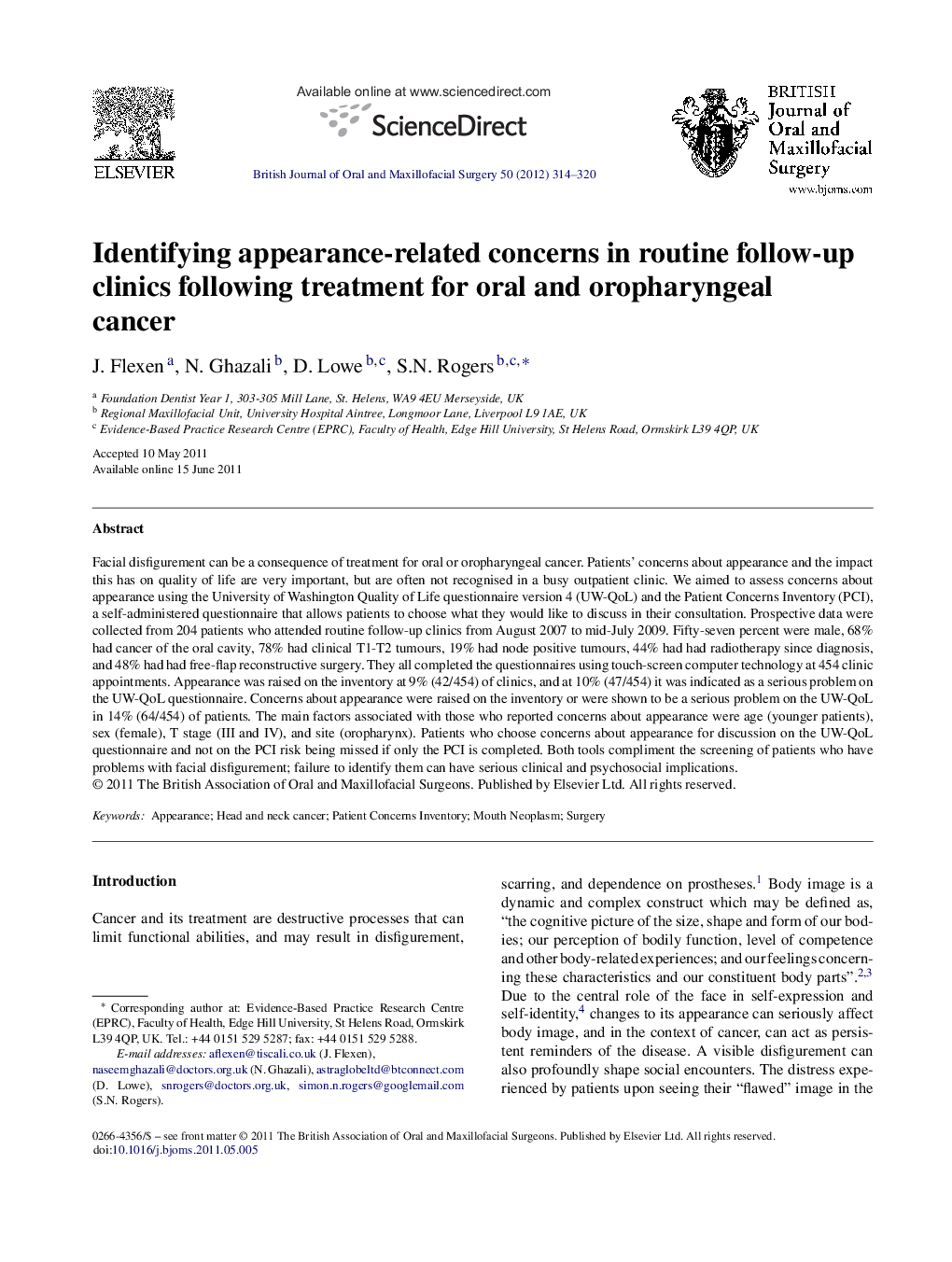| Article ID | Journal | Published Year | Pages | File Type |
|---|---|---|---|---|
| 3123944 | British Journal of Oral and Maxillofacial Surgery | 2012 | 7 Pages |
Facial disfigurement can be a consequence of treatment for oral or oropharyngeal cancer. Patients’ concerns about appearance and the impact this has on quality of life are very important, but are often not recognised in a busy outpatient clinic. We aimed to assess concerns about appearance using the University of Washington Quality of Life questionnaire version 4 (UW-QoL) and the Patient Concerns Inventory (PCI), a self-administered questionnaire that allows patients to choose what they would like to discuss in their consultation. Prospective data were collected from 204 patients who attended routine follow-up clinics from August 2007 to mid-July 2009. Fifty-seven percent were male, 68% had cancer of the oral cavity, 78% had clinical T1-T2 tumours, 19% had node positive tumours, 44% had had radiotherapy since diagnosis, and 48% had had free-flap reconstructive surgery. They all completed the questionnaires using touch-screen computer technology at 454 clinic appointments. Appearance was raised on the inventory at 9% (42/454) of clinics, and at 10% (47/454) it was indicated as a serious problem on the UW-QoL questionnaire. Concerns about appearance were raised on the inventory or were shown to be a serious problem on the UW-QoL in 14% (64/454) of patients. The main factors associated with those who reported concerns about appearance were age (younger patients), sex (female), T stage (III and IV), and site (oropharynx). Patients who choose concerns about appearance for discussion on the UW-QoL questionnaire and not on the PCI risk being missed if only the PCI is completed. Both tools compliment the screening of patients who have problems with facial disfigurement; failure to identify them can have serious clinical and psychosocial implications.
